UNHCR Population Statistics Database contains data about UNHCR’s populations of concern from the year 1951 up to 2014 as well as their general composition by location of residence or origin, their status, their evolution over time.
Displacement Statistics
The Population Database
UNHCR’s populations of concern status includes:
Refugees include individuals recognised under the 1951 Convention relating to the Status of Refugees; its 1967 Protocol; the 1969 OAU Convention Governing the Specific Aspects of Refugee Problems in Africa; those recognised in accordance with the UNHCR Statute; individuals granted complementary forms of protection; or those enjoying temporary protection. Since 2007, the refugee population also includes people in a refugee-like situation.
Asylum-seekers are individuals who have sought international protection and whose claims for refugee status have not yet been determined, irrespective of when they may have been lodged.
Internally displaced persons (IDPs) are people or groups of individuals who have been forced to leave their homes or places of habitual residence, in particular as a result of, or in order to avoid the effects of armed conflict, situations of generalised violence, violations of human rights, or natural or man-made disasters, and who have not crossed an international border. For the purposes of UNHCR’s statistics, this population only includes conflict-generated IDPs to whom the Office extends protection and/or assistance. Since 2007, the IDP population also includes people in an IDP-like situation. For global IDP estimates, see www.internal-displacement.org.
Returned refugees are former refugees who have returned to their country of origin spontaneously or in an organised fashion but are yet to be fully integrated. Such return would normally only take place in conditions of safety and dignity.
Returned IDPs refer to those IDPs who were beneficiaries of UNHCR’s protection and assistance activities and who returned to their areas of origin or habitual residence during the year.
Stateless persons are defined under international law as persons who are not considered as nationals by any State under the operation of its law. In other words, they do not possess the nationality of any State. UNHCR statistics refer to persons who fall under the agency’s statelessness mandate because they are stateless according to this international definition, but data from some countries may also include persons with undetermined nationality.
Others of concern refers to individuals who do not necessarily fall directly into any of the groups above, but to whom UNHCR extends its protection and/or assistance services, based on humanitarian or other special grounds.
from Table to Visualisation
The elements present below have been developped to facilitate the understanding of the statistics generated on displaced population in Middle East & North Africa (MENA). The objective is to identify the most important trend both in terms of temporal and spatial approach in order to support advocacy.
The MENA region have seen a series of conflict over the past 15 years that have generated large scale population displacement. There is currently 4 major conflict in the region and additional ones outside that have or are generating population displacement.
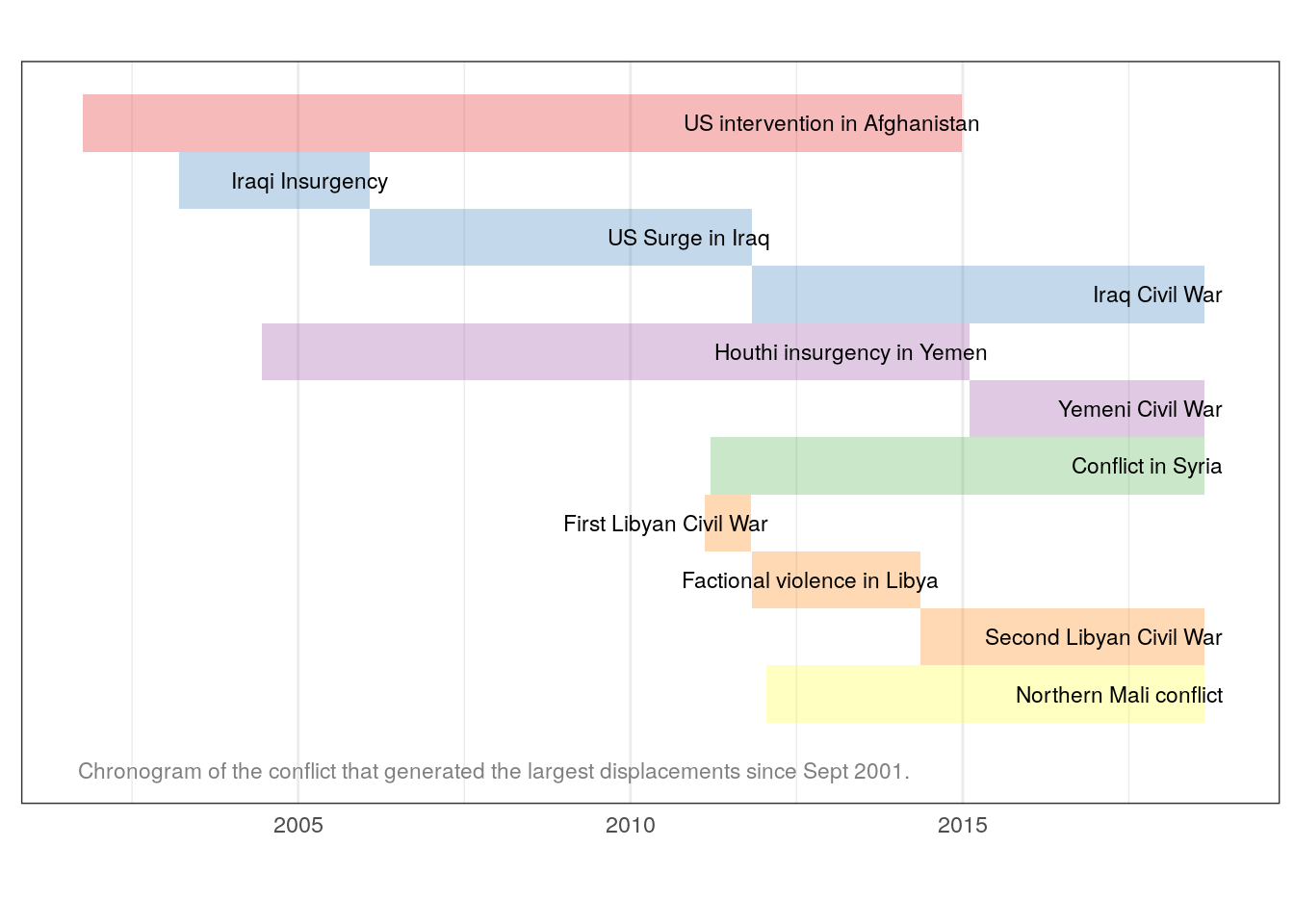
Temporal Analysis
Sankey Diagram are a specific type of flow diagram, in which the width of the arrows is shown proportionally to the flow quantity. This type of dataviz put a visual emphasis on the major change of flows profile of refugees within multiple countries or regions.
Asylum Seekers & Refugees in MENA
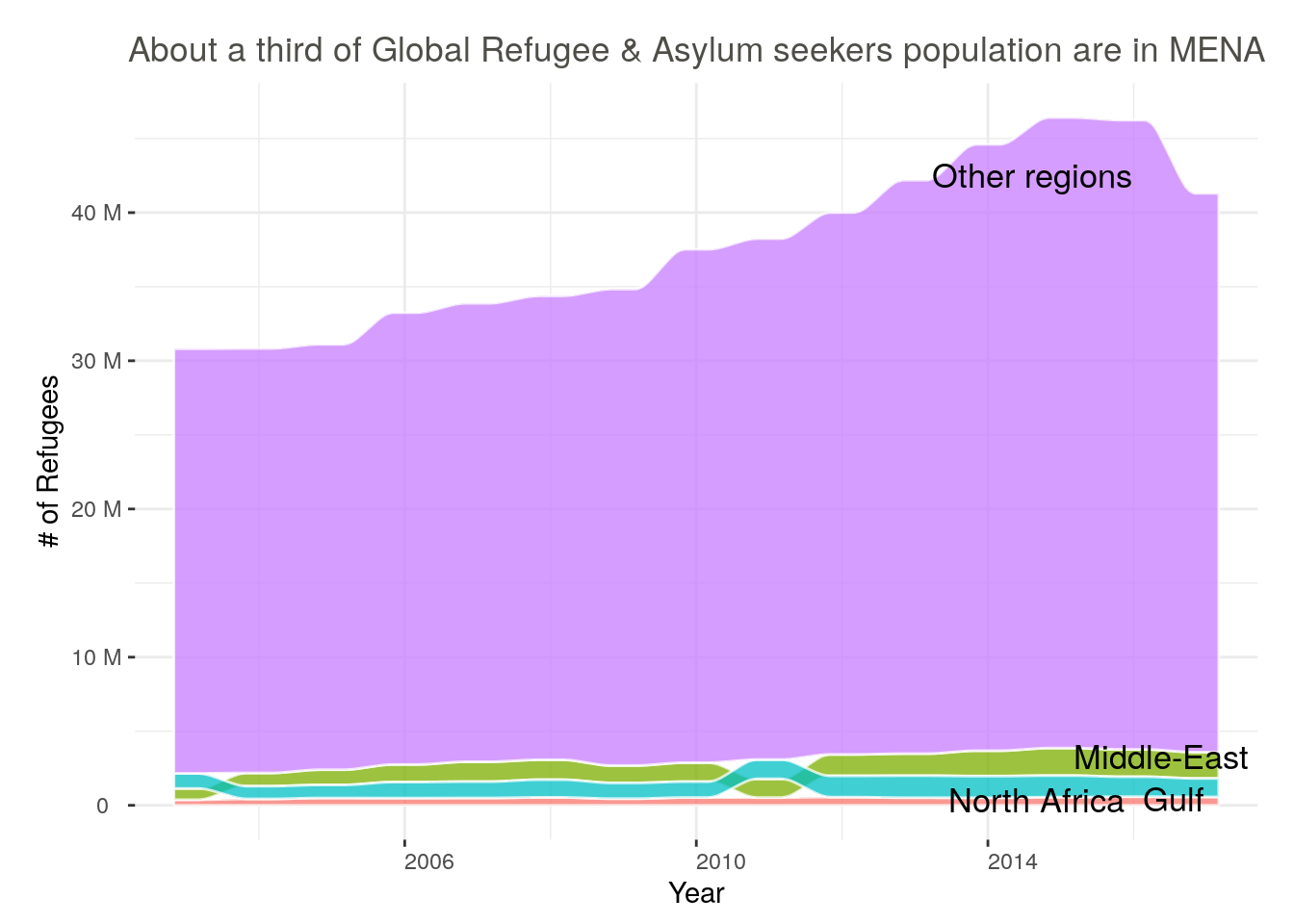
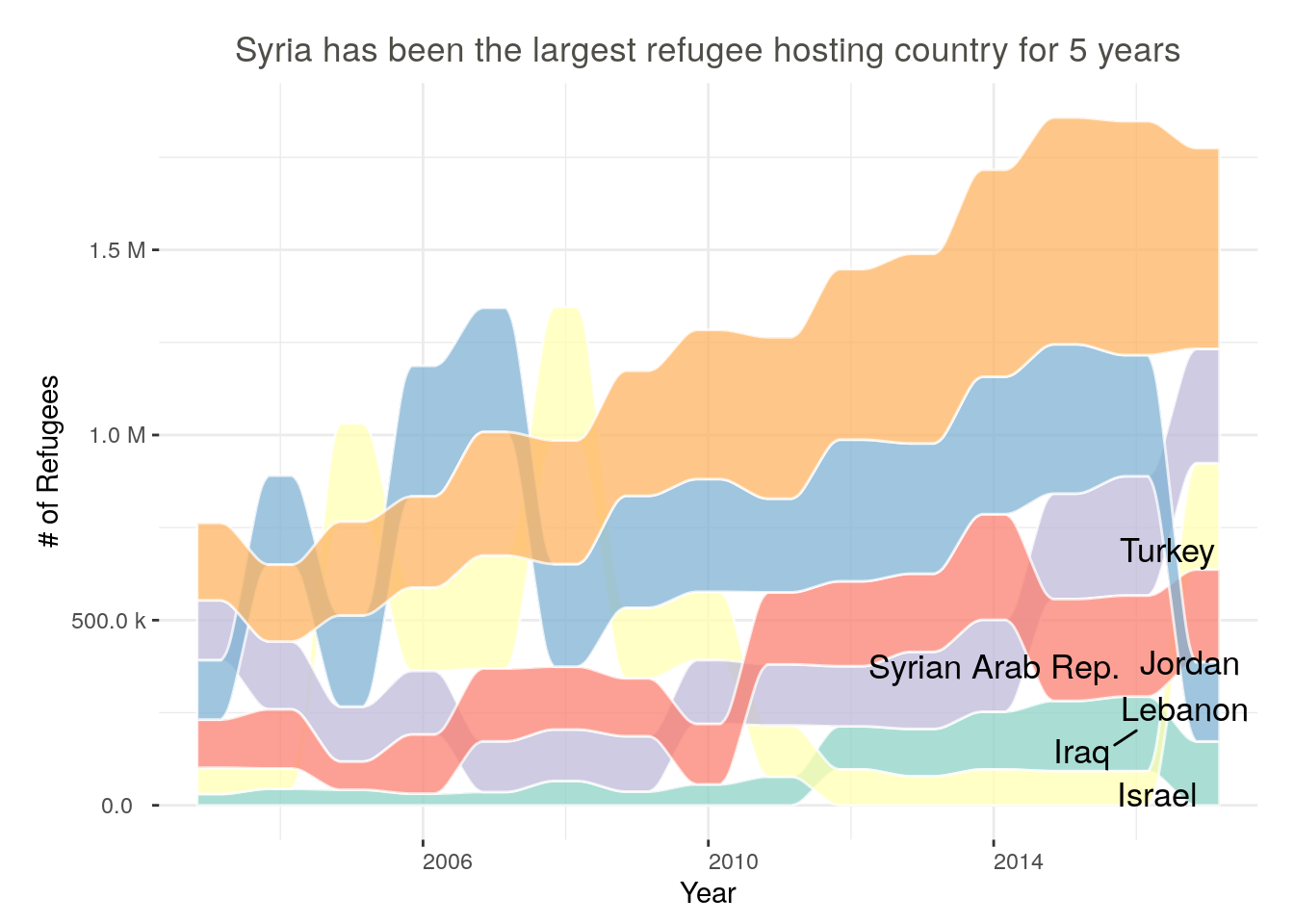
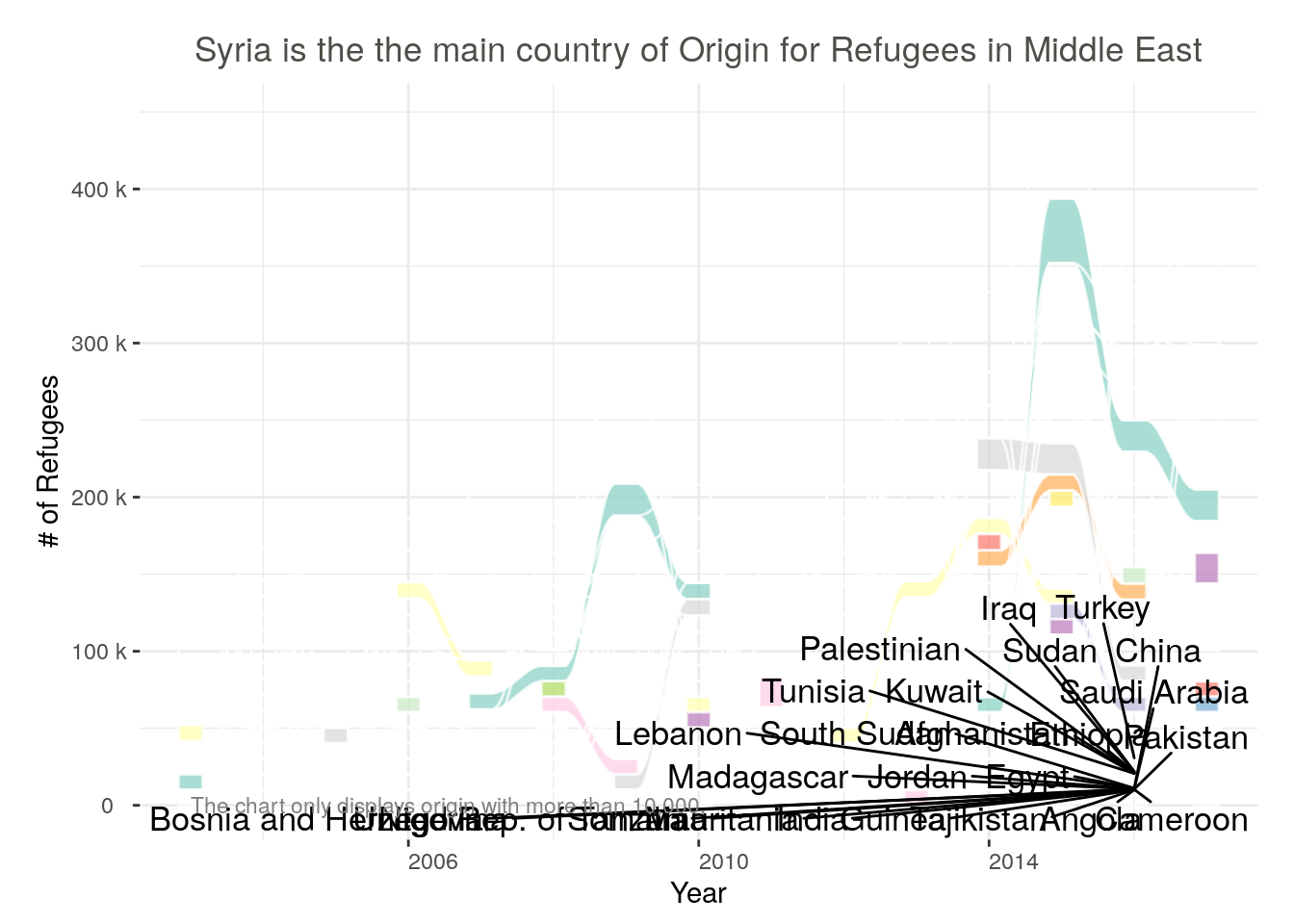


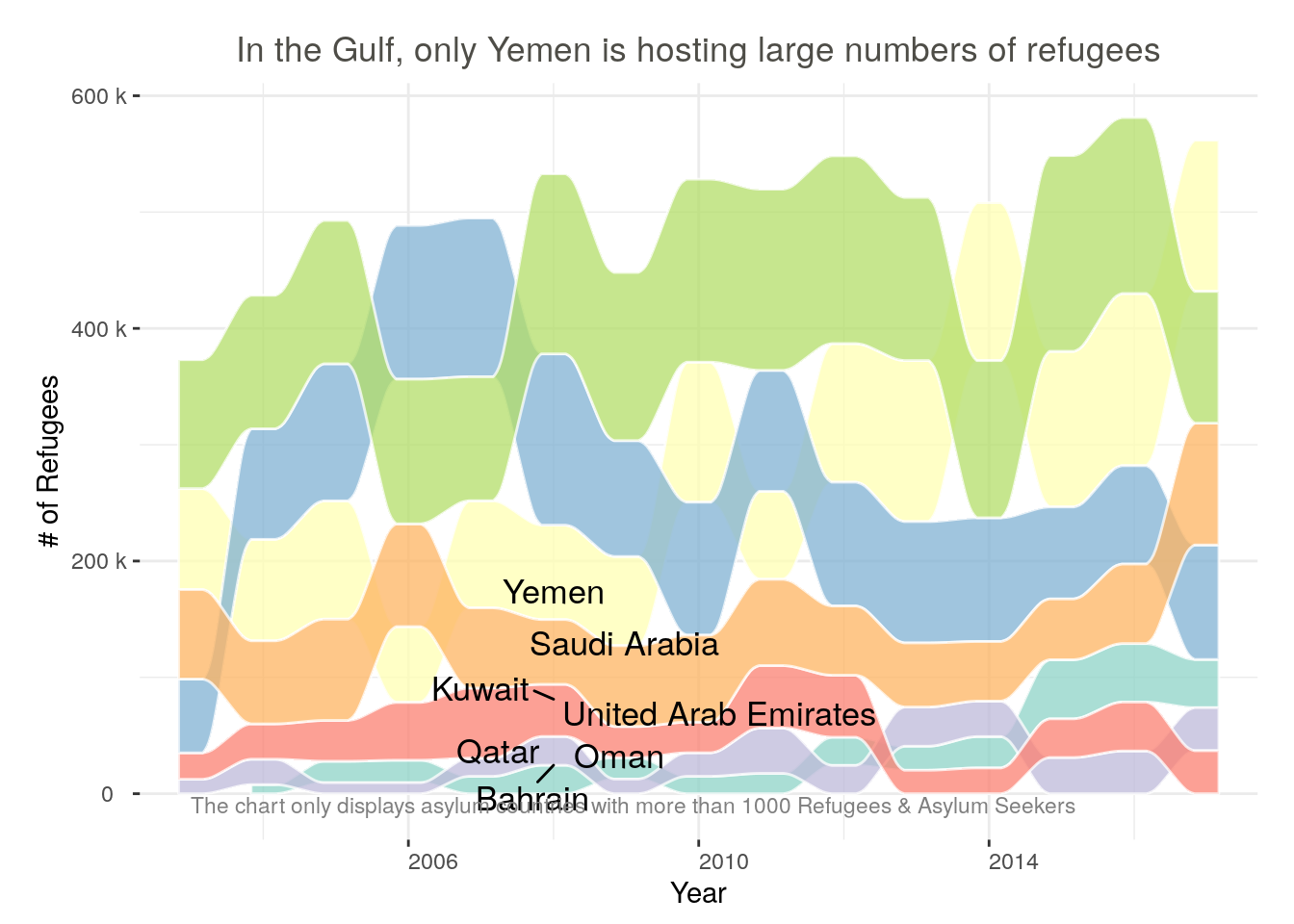

Internally displaced persons (IDPs) in MENA

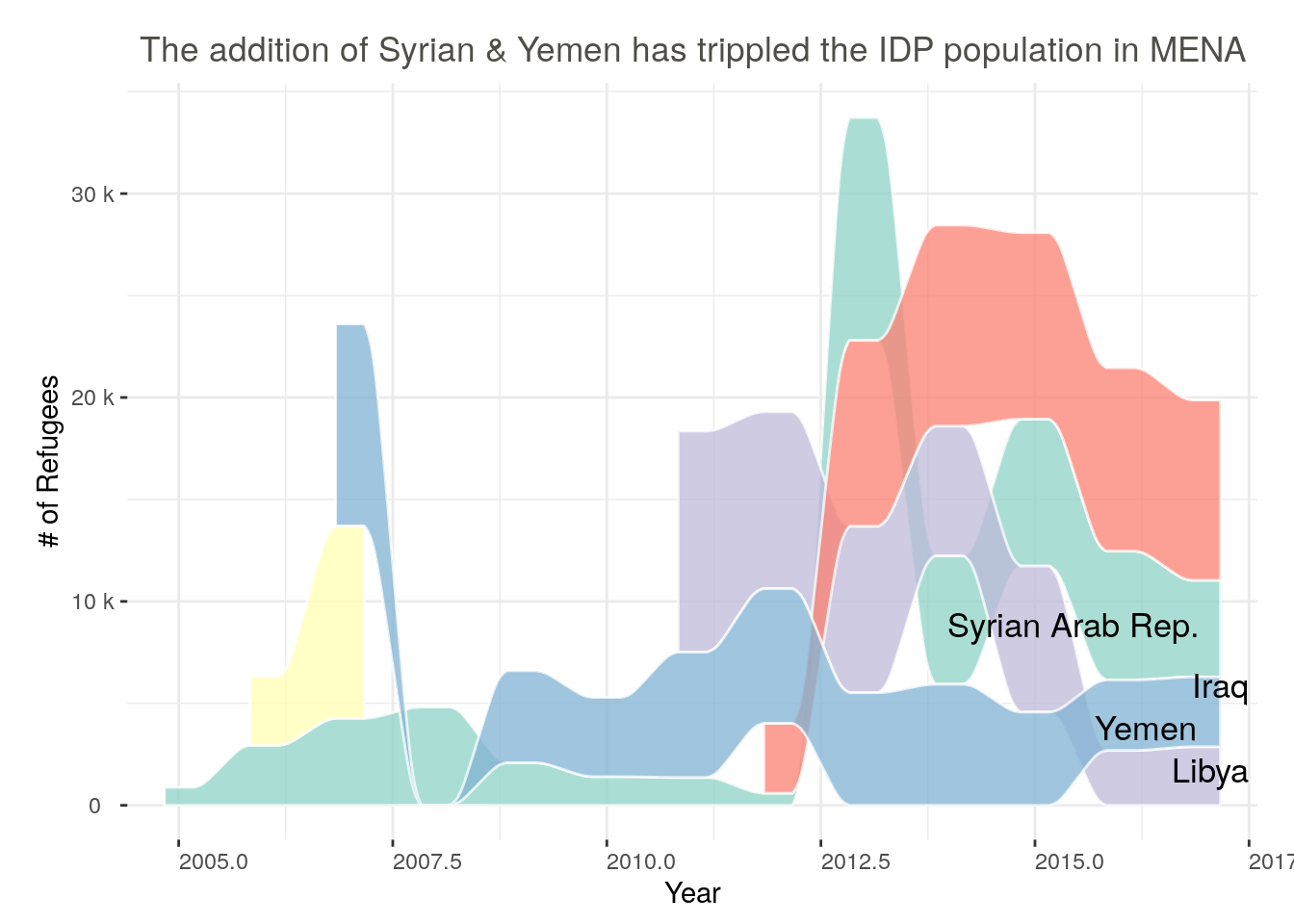
From Where ? Spatial Flow Visualisation
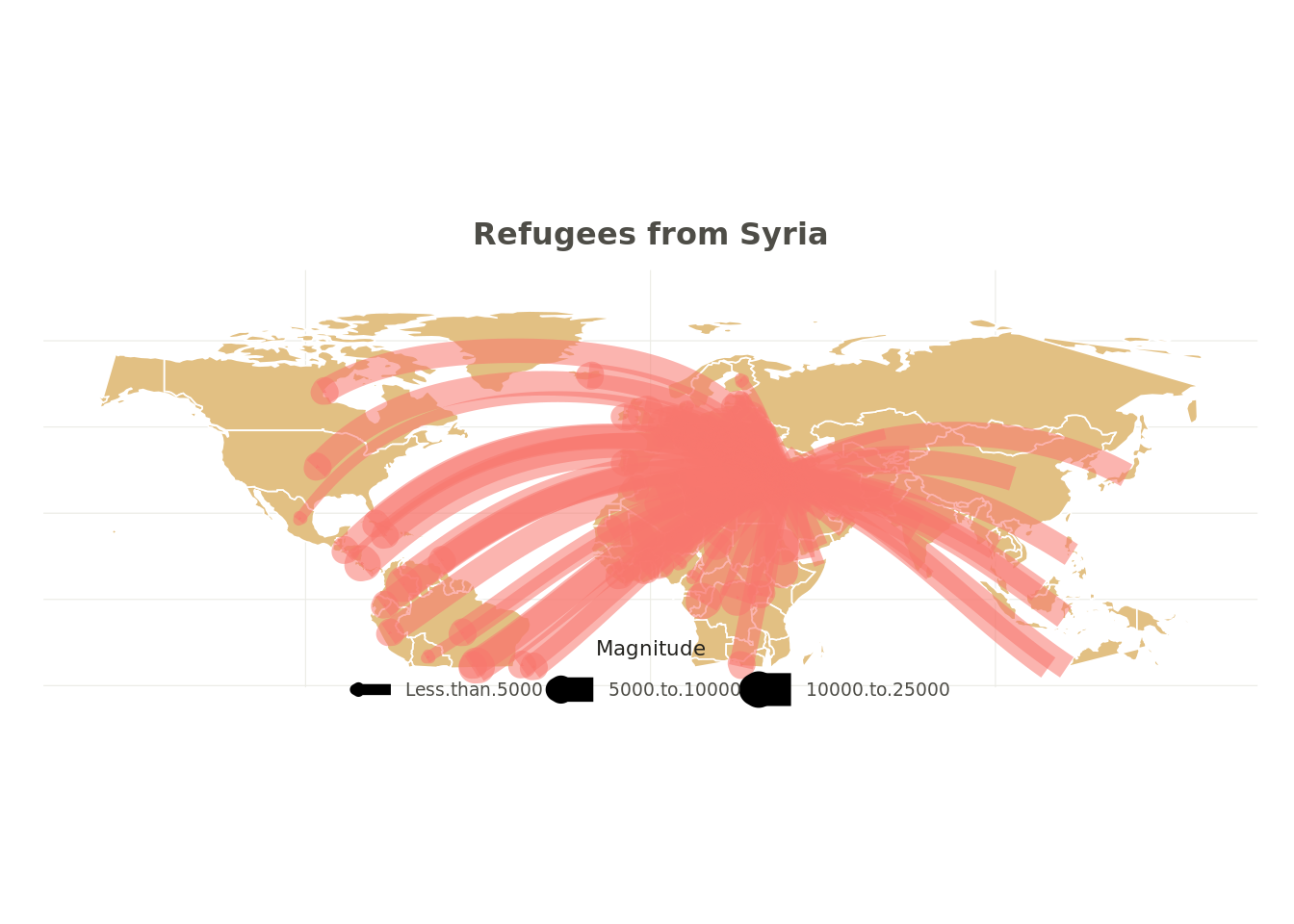
Map for 2017 to Syria Situation Countries
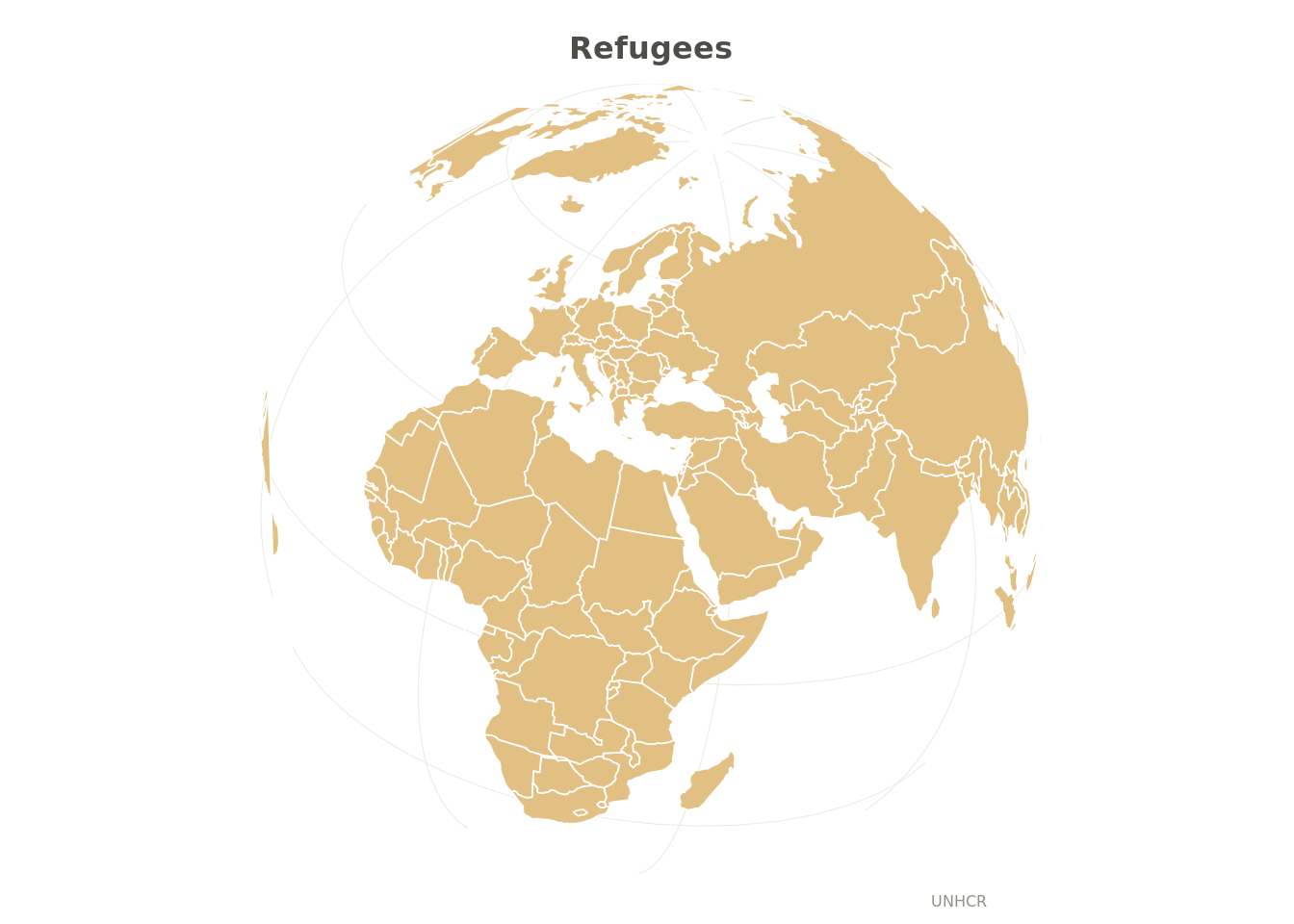
Map for 2017 from North Africa Countries
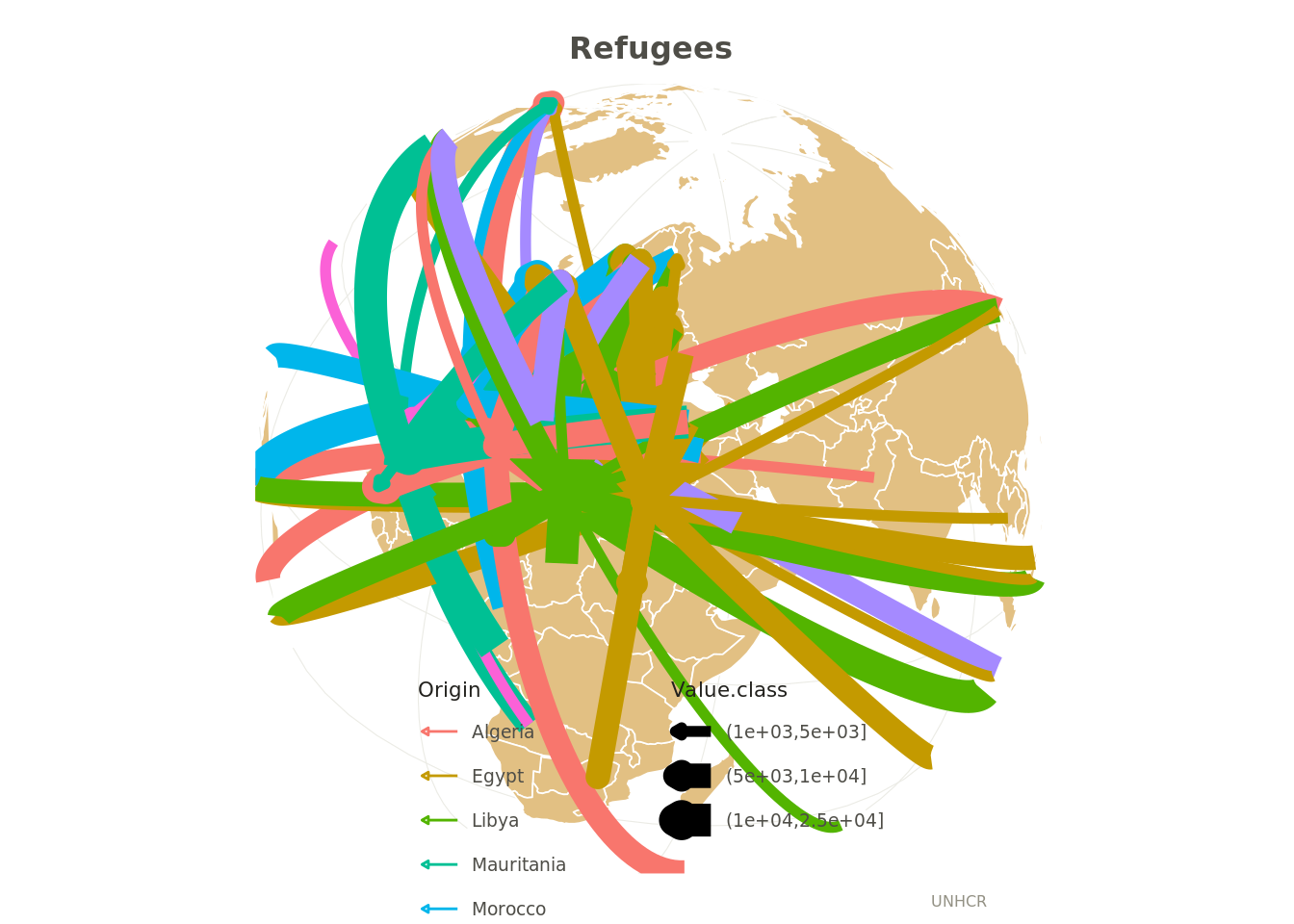
Map for 2017 from North Africa Countries
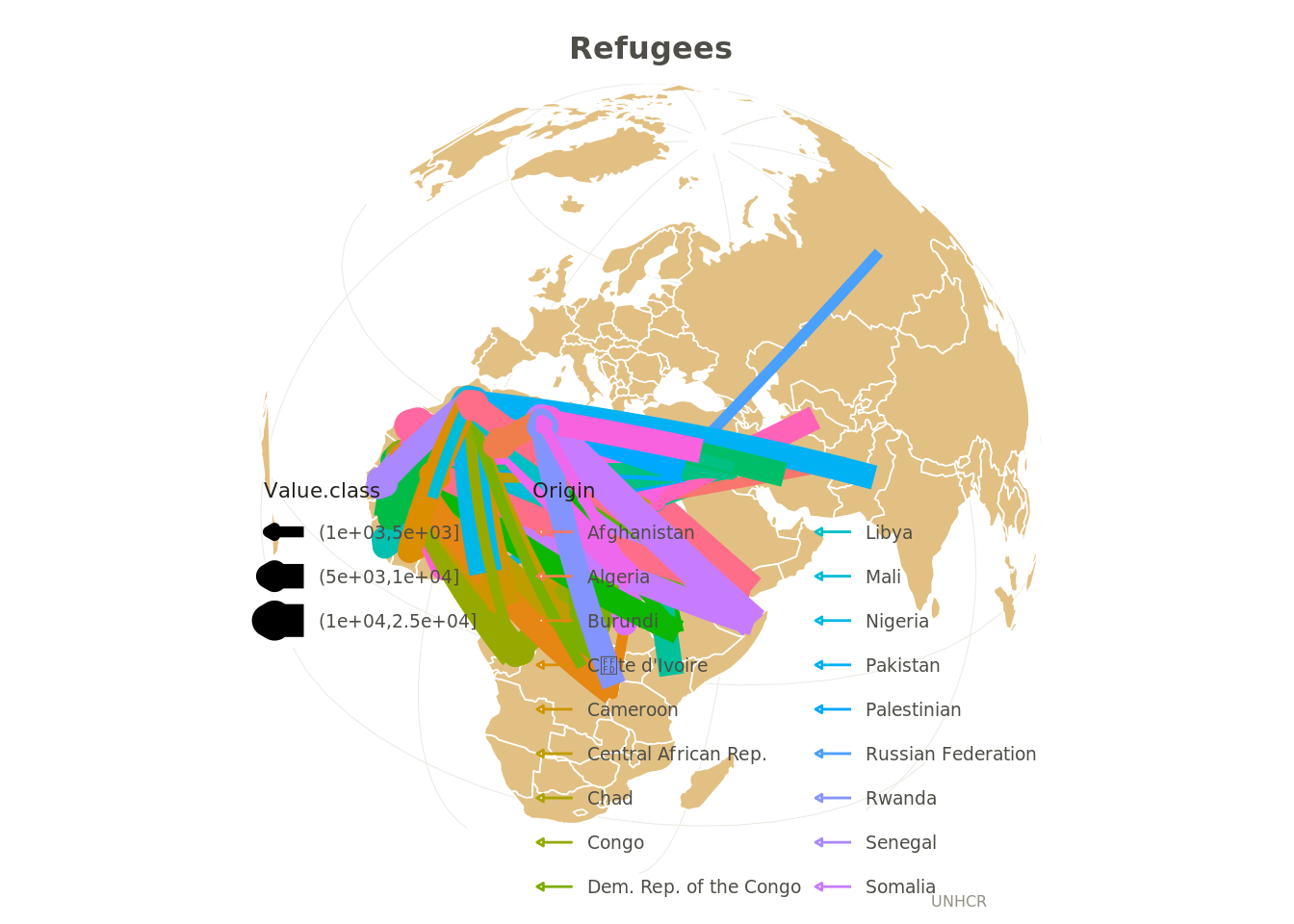
Map for 2017 from Gulf Countries
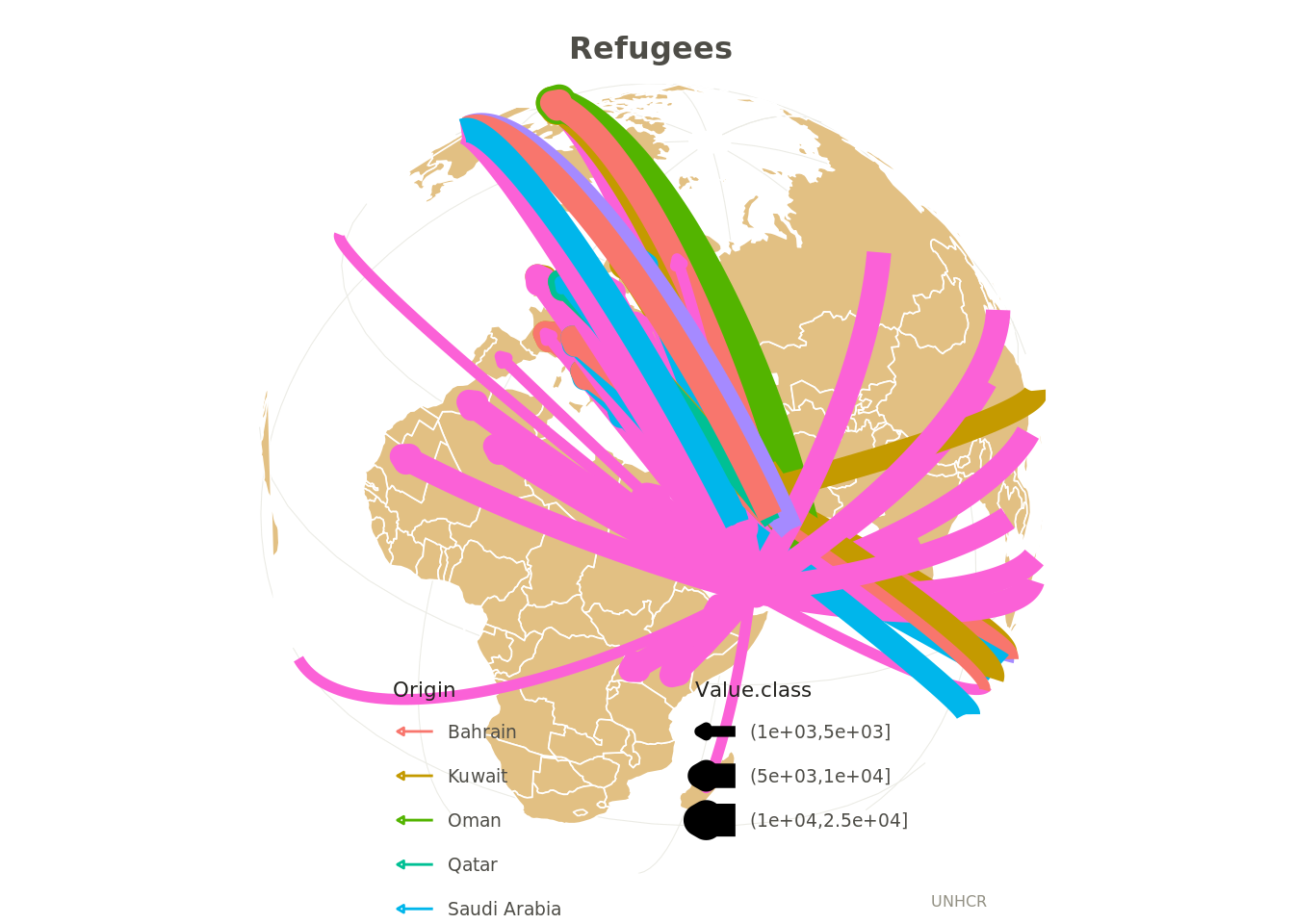
Map for 2017 to Gulf Countries
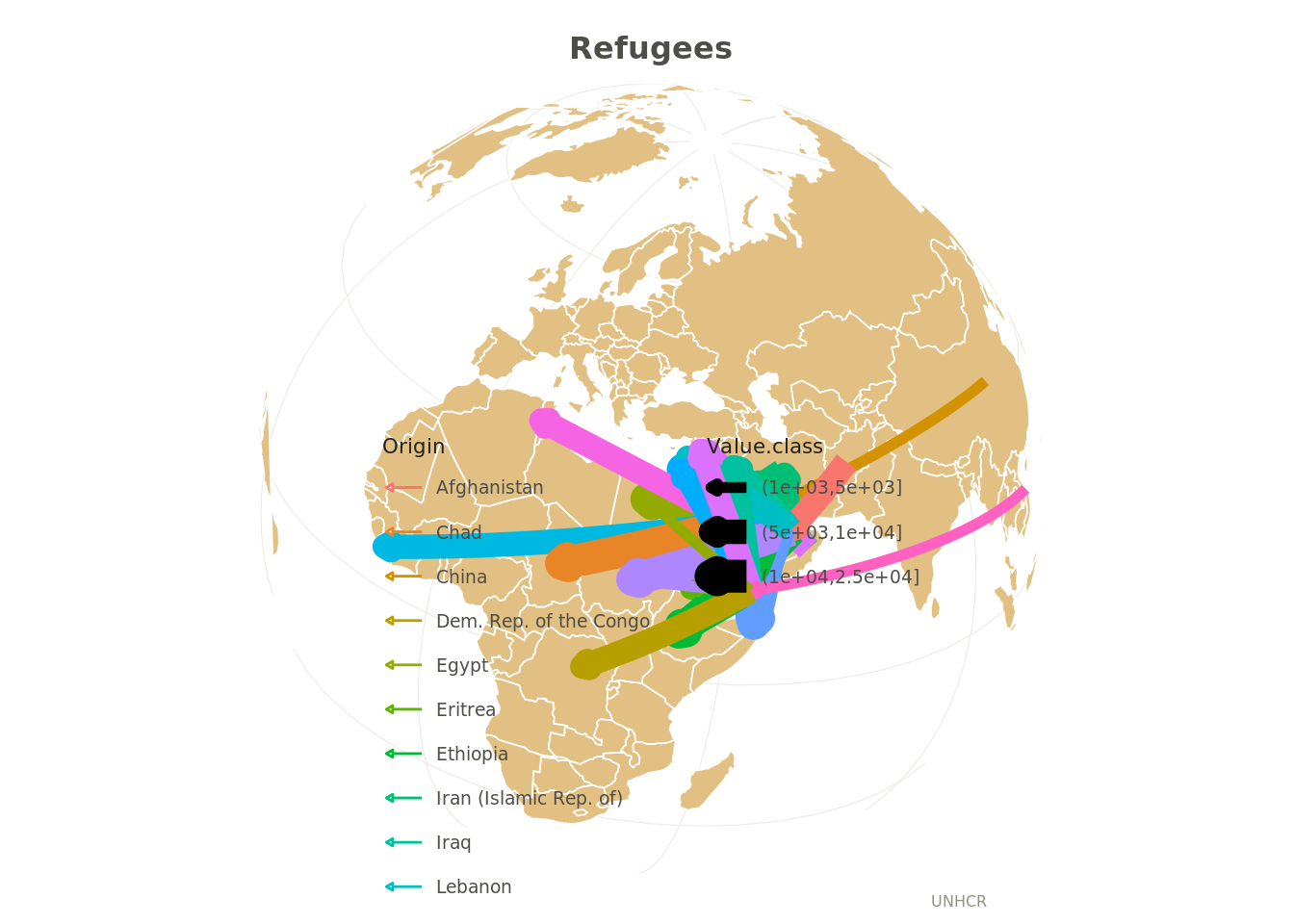
Spatio Temporal Analysis
An animation can be used to present the population movement over time
- This needs still to be adjusted to represent difference in flow betwen years…*
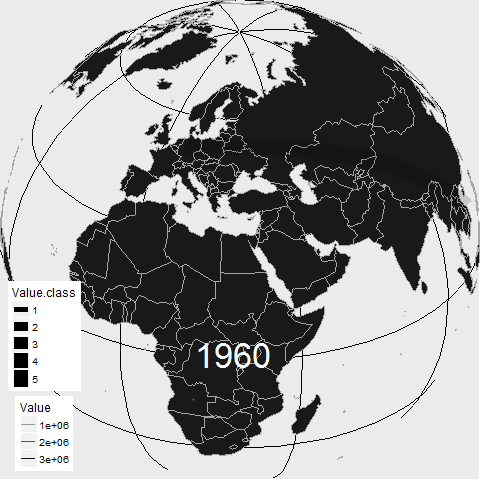
Share this post
Twitter
Google+
Facebook
Reddit
LinkedIn
StumbleUpon
Pinterest
Email